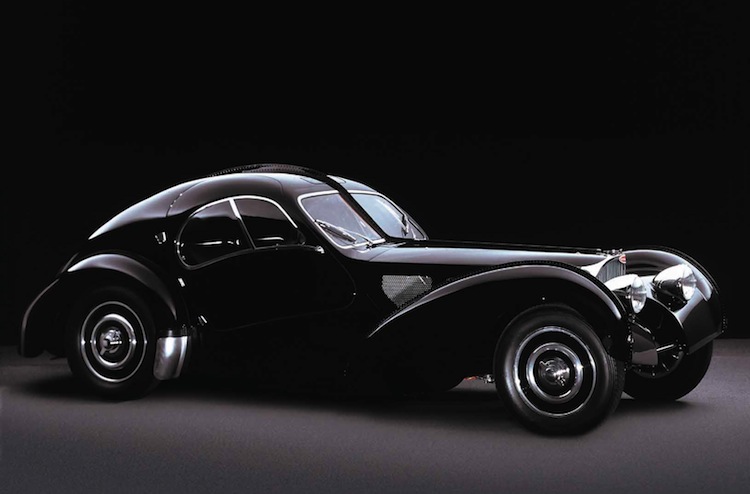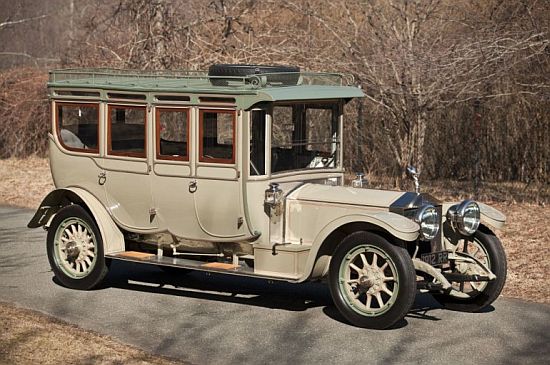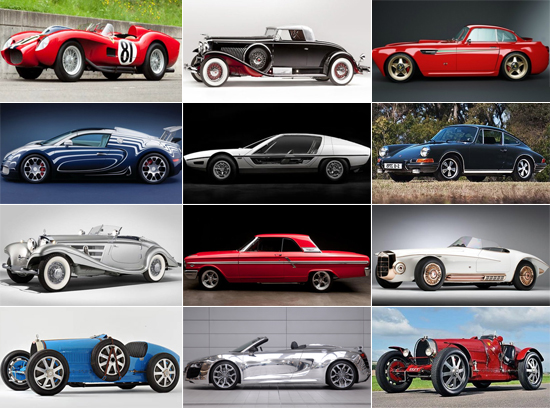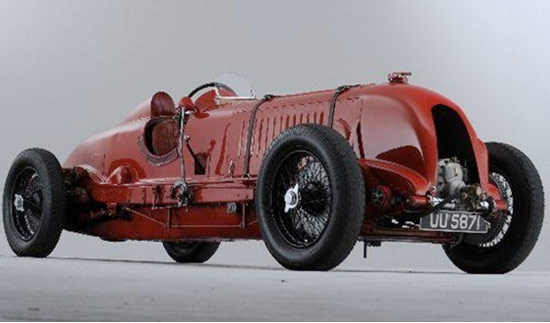Seven-figure deals are common at the top auto collector auctions these days, and the trend is there’s no limit in sight. It started in 1987, when a Bugatti Royale sold at a Christie’s auction in London for $7 million, and in 1988 a barn-find Ferrari sold for $2.8 million in Monterey, kicking off two decades of multi-million-dollar prices for special cars at auction. In 2005, the total take at the four car collector auctions during the week-long Scottsdale Barrett-Jackson extravaganza was $79 million.
To understand this trend, first you need to understand a bit about car auctions: They’re way different than a transaction between two people. The auction company charges a fee, called a buyer’s premium, from 5% to 17.5% in addition to the selling price of the car, and the buyer has to pay it. Then, the seller may add a seller’s premium. That’s part of the reason most car collectors tell us an auction is the most expensive way to buy a car. Another reason is that bidding tends to raise competition beyond any other type of negotiation.
Often buyers play with the auction process, looking for cars that do not meet a minimum purchase price, known as a seller’s reserve, and then the buyers contact the sellers privately after the auction to purchase the car without public scrutiny. (IRS agents patrol high-dollar auto auctions.) However, an auction is a way to make a transaction happen that otherwise might take too long, or might not attract a buyer at all. It is likely private transactions have resulted in higher prices than the following auction results, but we’ll never know.
NOTE: The dollars figures given are what the cars sold for at the time of auction. If the sale prices listed here were corrected for the change in the dollar over time, this list would change. For example, in June 1986, a 1931 Bugatti Royale known as the Berline de Voyager auctioned for $6.5 million. Many auction followers believe that if adjusted to today’s dollars, the car actually sold for the equivalent of between $11 and $20 million.
That said, here are the top auction prices to date.
1957 Ferrari 250 Testa Rossa
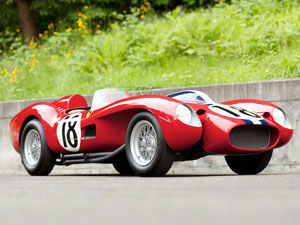 Price Paid: $16,390,000
Price Paid: $16,390,000Sold: August 2011 at Monterey, Calif.Just this year, a 1957 Ferrari 250 Testa Rossa was sold at the Gooding & Company auction during the Pebble Beach collector car extravaganza for $16,390,000, which is about $4 million more than the previous price record-setting Ferrari from two years ago. The car itself is known to collectors as the “666” Testa Rossa (Italian for “red head”), because its serial number from the Ferrari factory is 0666TR. It’s the first prototype of all of the subsequent Testa Rossas, which had breakthrough “pontoon” bodywork, as well as a 3.0-liter V12 engine. It raced at LeMans, the Nurburgring, and at Sebring endurance sports car events, though as a test prototype its results were merely average.
1957 Ferrari 250 Testa Rossa
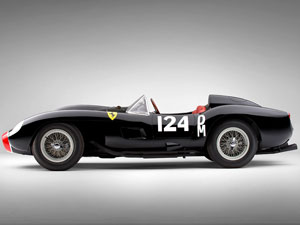 Price Paid: $12,402,500
Price Paid: $12,402,500Sold: May 2009 at Maranello, ItalyAimed at light weight and reliability, the 250 Testa Rossa even had old-tech drum brakes and a live rear axle (albeit with modern deDion linkage), but drivers such as Luigi Musso, Mike Hawthorn, Peter Collins, Wolfgang Von Trips, Phil Hill, Oliver Gendebien and Wolfgang Seidel became legends as they won the maker’s championship for Ferrari. In this car, Hill and Gendebien won LeMans. Only 19 total 250 Testa Rossas were built.
1961 Ferrari 250 GT SWB California Spyder
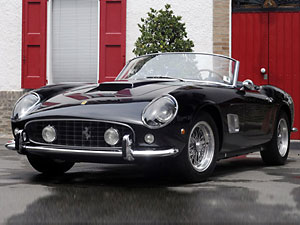 Price Paid: $10,894,900
Price Paid: $10,894,900Sold: May 2008 at Maranello, ItalyFerrari’s racecars had a history of contributing technology to the automaker’s street-going vehicles. In this case, it was the car’s 3.0-liter V12 engine (the designation 250 stands for the displacement of each cylinder).
Oscar-winning actor James Coburn bought this SWB (short wheelbase) soft-top used in 1964 and owned it until 1988. In 2008, English radio personality Chris Evans bid nearly $11 million for the car, which set a record at the time.
1931 Duesenberg Model J Murphy-Bodied Coupe
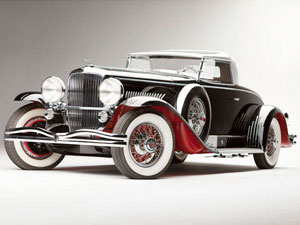 Price Paid: $10,340,000
Price Paid: $10,340,000Sold: August 2011 at Monterey, CaliforniaWealthy San Francisco eccentric George Whittell Jr. commissioned this car, a variant of the Model J that was introduced in 1928, after Duesenberg started building passenger cars in 1921 following a win at the French Grand Prix. The Model J is a big car, with a special Frank Hershey-designed and Murphy of Pasadena-constructed body built on a truck-type ladder frame, and many owners have told us they drive like trucks, too.
Lycoming, today an aircraft engine builder, built the 6.9-liter straight-eight twin-cam engine. Clark Gable, Jim Cagney, and royalty owned Model Js. Fewer than 500 were built by 1937, when the company died.
1931 Bugatti Royale Type 41 Kellner Coupe
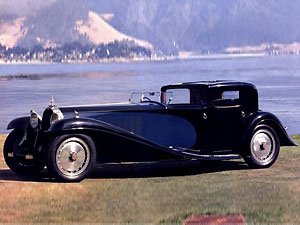 Price Paid: $9,800,000
Price Paid: $9,800,000Sold: November 1987 at London, EnglandEttore Bugatti had dreams of building the biggest, most luxurious car ever made and selling it to kings and queens around the world. Royal customers balked at spending what Bugatti was charging, and so only six of the cars were built, and only three sold.
Powered by a 12.7-liter aircraft and train engine, and bodied by Paris coachbuilder Kellner, this car was bricked into Bugatti’s French garage to hide it from the Nazis.
1937 Mercedes-Benz 540K Special Roadster
 Price Paid: $9,680,000
Price Paid: $9,680,000Sold: August 2011 at Monterey, CaliforniaOriginally ordered for an Argentinian customer, this well-preserved and rare Mercedes spent time with owners in Europe and Australia before finding a home with well-known East Coast collector Sam Mann and his wife Emily. There were just 400 or so supercharged 540K luxury roadsters built, and this model has longer rear bodywork and a tall beltline. Collectors suggest there are only three examples of this design surviving. The car has won numerous show trophies for the Manns.
1962 Ferrari 330 TRI/LM Testa Rossa
 Price Paid: $9,281,250
Price Paid: $9,281,250Sold: May 2007 at Maranello, ItalyDrivers Phil Hill and Olivier Gendebien were the masters of Ferrari’s front-engine sports racers, and beat newer mid-engine models to win Le Mans in 1962. Ferrari and other carmakers were moving to mid-engine designs, but racing rules for 1962 allowed this final Testa Rossa a larger front engine, a 4.0-liter V-12.
This car was built on a unique chassis, with beefed-up components for the extra power, and it featured an all-independent suspension. Hill loved the shape of the body, and following the ’62 LeMans race, the car began racing in North America. Roger Penske crashed the car in 1963 at LeMans.
1937 Mercedes-Benz 540K Special Roadster
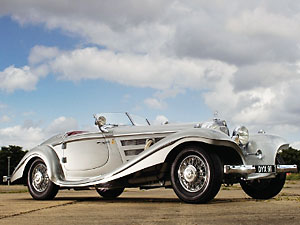 Price Paid: $8.252,000
Price Paid: $8.252,000Sold: October 2007 at LondonFerdinand Porsche was the engineer behind the supercharged engines that became the basis of the screaming 540K (“K” for Kompressor) Mercedes. Remarkable U.S. designer Brooks Stevens once owned this example. It won an award from the Antique Automobile Club of America in 1987, following a meticulous restoration, and then won another award at Pebble Beach in 1988. Eventually former Formula One boss Bernie Ecclestone bought it in 1995, then put it on the auction block in 2007.
1937 Bugatti Type 57 Atalante Coupe
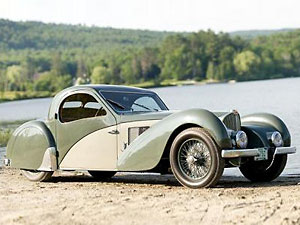 Price Paid: $7,920,000
Price Paid: $7,920,000Sold: August 2008 at Monterey, California Once owned by a count in Paris, this supercharged coupe has been painted a number of times. But it retains the original window glass and tan leather, and is an extremely well preserved example of the Atalante road-going sportscar designed by Jean Bugatti, Ettore’s son.Well-known Bugatti collector Dr. Peter Williamson owned this particular car before he died of cancer in 2008. Three months later the car sold for nearly $8 million at auction, and the money went to the Dartmouth-Hitchcock Medical Center in New Hampshire.
1965 Shelby Daytona Cobra Coupe
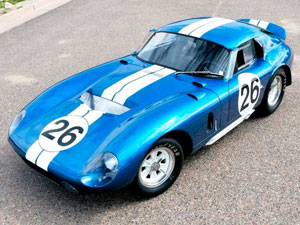 Price Paid: $7,685,000
Price Paid: $7,685,000Sold: August 2009 at Monterey, CaliforniaSix of these racing coupe versions of the iconic Shelby Cobra were built. Peter Brock designed the coupe body to improve aerodynamics and increase top speed. This one won the 24 Hours of Daytona race in 1965, as well as races in Monza, Spa, and the Nurburgring. It also won the maker’s championship at the Reims circuit in France, where it was driven by Bob Bondurant.
Credits:
Popular Mechanics

